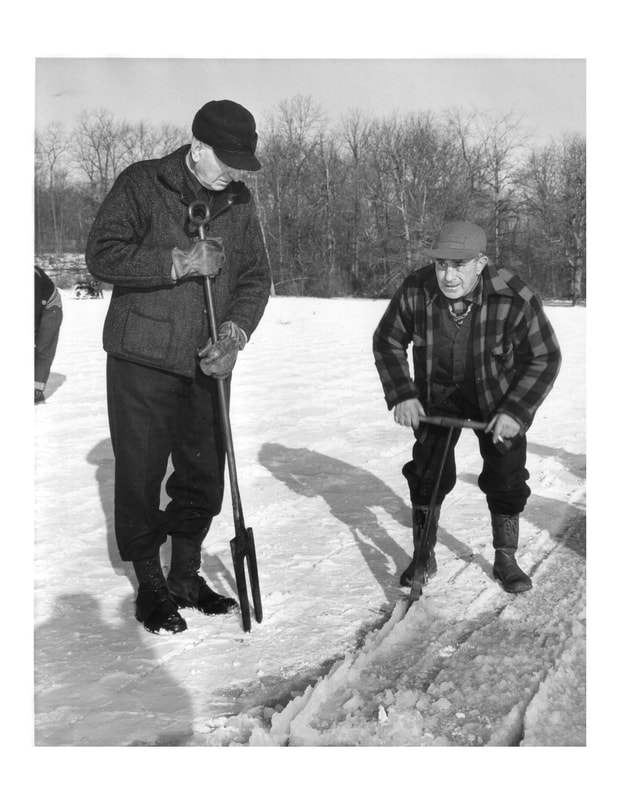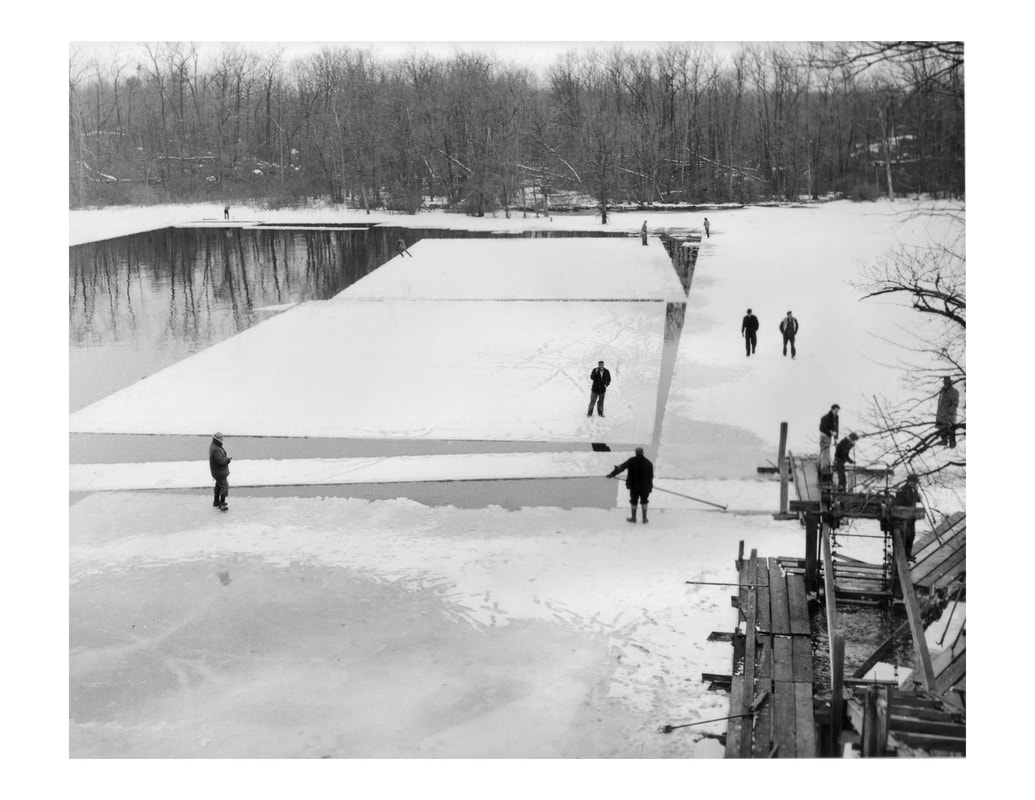|
Hello everyone! I hope you are weathering this hot summer well. More rain is in the forecast today around here. We have an abundance of rain while part of the nation suffers through an historic drought. I hope they get the relief they need very soon.
Today I wanted to share a few "cool" thoughts during a hot summer, and where better to turn than Monte's Ice House? Once located at 260 Elm Street, the two large ice warehouses stood for many years near the shore of Monte's Pond. The Marshall family originally began harvesting ice there in the mid-1800's. Fred J. Monte (1894-1983) was hired by a man named Bigelow who ran the ice house in the early 1900's. In 1927, Fred became the owner, and continued harvesting ice until 1967. Monte's was the last commercial ice house in operation in New England when it closed. At first, his customers would be residents and small stores who needed fresh ice to keep perishables from spoiling. Later clients included commercial fishing operators, who needed ice for the fishing boats that went to sea each morning. A truck full of ice would be loaded in North Easton, and it would leave a trail of water behind it all the way to Fall River, New Bedford, or any other fishing port where it was needed. Clearly one had to have a good sense of how much ice would be lost due to melting along the trip to make sure that when the truck arrived, there would be enough ice for the fishing fleet! In a normal year, Monte would harvest between 12,000 - 14,000 tons of ice! We must have had much colder winters then, because the usable, clear ice (after the bottom and top had been shaved clean) would be 12-14" thick. Several harvests were done during the winter to fill the ice houses. Keeping ice all year was important, and the ice houses were constructed with double walls, filled with sawdust or hay, to act as an insulator. Each layer of ice was also covered in the same way. That simple method worked very well, and once laid in, the ice would last until the following winter's harvest began. When I was young, Austin Phillips, who lived on South Street near Highland Street, called me over one day in August. Behind his barn, in a corner where he had been cutting wood, was a large pile of sawdust. What impressed me was not the size of the pile, but what it concealed: snow and ice from the past winter, which had been protected all summer by a thick covering of sawdust! The three photos attached give you an idea of what the ice harvest looked like. In one, Fred J. Monte, in his usual plaid wool coat and hat, is working a hand-held ice saw to cut ice from the pond. The other man is unidentified. Another photo shows large rectangles of ice cut from the ice field. These would continue to be cut down in size until they were the proper size for storing in the ice house. The third photo shows one of the two ice houses at the site. Notice the conveyor system used to move the ice into the ice house. The entire scaffolding on the side of the building could be raised and lowered as needed to load or unload the ice. The whole system was powered by a gasoline engine located in the top of the ice house. This was quite an undertaking! Workers included a small year-round staff, but during harvest time, people were hired from all around. Members of the Oliver Ames football team often found work there, and following World War II, many veterans could find employment there during the winter. Enjoy the "cool" thoughts during this hot spell, and until next week, stay well! Frank
0 Comments
Your comment will be posted after it is approved.
Leave a Reply. |
Author
Anne Wooster Drury Archives
June 2024
Categories |
Easton Historical Society and Museum
PO Box 3
80 Mechanic Street
North Easton, MA 02356
Tel: 508-238-7774
[email protected]



